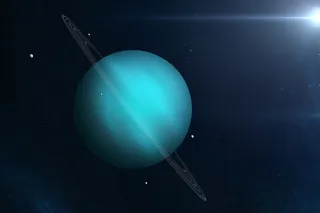All sorts of responsibilities have been sadly neglected, as I've been zooming around the continent -- stops in Illinois, Arizona, New York, Ontario, New York again, and next Tennessee, all within a matter of two weeks. How is one to blog under such trying conditions? (Airplanes and laptops are involved, if you must know.) But the good news is that I've been listening to some very interesting physics talks, the kind that actually put ideas into your head and set off long and convoluted bouts of thinking. Possibly conducive to blogging, but only if one pauses for a moment to stop thinking and actually write something. Which is probably a good idea in its own right. One of the talks was a tag-team performance by Dick Bond and Lev Kofman, both cosmologists at the Canadian Institute for Theoretical Astrophysics at the University of Toronto. The talk was part of a ...
Reconstructing Inflation
Explore inflationary models and their effects on scalar and tensor perturbations. Learn how quantum fluctuations shape our universe.
More on Discover
Stay Curious
SubscribeTo The Magazine
Save up to 40% off the cover price when you subscribe to Discover magazine.
Subscribe












